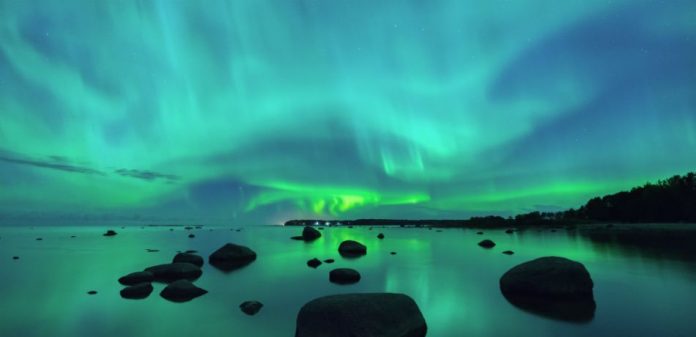An unexpected solar geomagnetic storm hit Earth on April 20. As a result, the skies in the Northern Hemisphere lit up with a stunning light show of uniquely-colored auroras.
An interplanetary shock wave hit Earth’s magnetic field on April 19th around 23:50 UT. When the disturbance arrived, the density of solar wind flowing around our planet abruptly quadrupled and a crack opened in Earth’s magnetic field. The resulting G2-class geomagnetic storm sparked unusual “electric blue” auroras.
“I’ve been flying airplanes for 20 years and photographing aurora for 10 years, but I’ve never seen anything like this before,” reports pilot Matt Melnyk who photographed the display from 39,000 feet:
“Electric blue auroras!” he says.
“This was while on a red eye flight from Edmonton to Toronto around 4 am over northern Manitoba. Unbelievable sky. I was able to grab some hasty shots with a cell phone.”
Auroras are usually green-a sign of oxygen. Rare blue auroras are caused by nitrogen molecules. Energetic particles striking N2+ at the upper limits of Earth’s atmosphere can produce an azure glow during intense geomagnetic storms.
During the storm, Northern Lights spilled across the Canadian border into more than half-a-dozen northern-tier US states. “The auroras were so bright, they could be seen inside the city of Kalispell, Montana,” reports Philip Granrud.
“We could see auroras for most of the night [even through the glare of our urban lights],” he says.
Auroras were also sighted in the southern hemisphere with an outburst of exceptional beauty over Tasmania.
What is an interplanetary shock wave? It is a supersonic disturbance in the gaseous material of the solar wind. These waves are usually delivered by coronal mass ejections (CMEs). Indeed, this one might have been a minor CME that left the sun unrecognized earlier this week.
Alternately, it might have been an unusually sharp co-rotating interaction region (CIR). CIRs are transition zones between slow- and fast-moving streams of solar wind. They contain plasma density gradients and magnetic fields that often do a good job sparking auroras.















